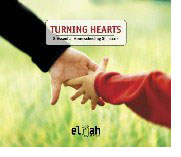
E-journal November 24, 2009 |
Happiness and the 80/20 Rule View past ejournals HERE>> Sign up for our newsletter below. In the last issue, we examined three universally agreed-upon components of happiness and I shared briefly about the 80/20 Rule. Happiness and the 80/20 Rule OK, so what does this have to do with increasing the amount of happiness in our lives? Twenty percent of what we do leads to 80 percent of the results; but 80 percent of what we do leads to only 20 percent. We are wasting 80 percent of our effort on low-value outcomes. Twenty percent of our time is spent on 80 percent of what we value; 80 percent of our time is wasted on things or people who have little value to us. Eighty percent of the value of our relationships comes from 20 percent of our relationships, yet we tend to devote much less than 80 percent of our attention to the 20 percent of relationships that create 80 percent of the value for us. As Richard Koch, author of the book The 80/20 Principle comments, “We consistently undercultivate what is important.” Koch says, Twenty percent of what we do leads to 80 percent of the results we seek [in this case, happiness]; but 80 percent of what we do leads to only 20 percent. We are wasting 80 percent of our effort on low-value outcomes. This means, that when it comes to happiness, twenty percent of our time leads to 80 percent of our happiness; but 80 percent of our time yields very little happiness. The depressing fact of the 80/20 principle is that we are spending a lot of our time, energy, and money on things that have little value to us and bring us little joy. But the promise of the 80/20 principle is that, once we put it into practice, we can work less, enjoy more, earn more, and achieve more. Top 20 Lists So, now that we know about the 80/20 Principle, we can start determining the 20% in our lives that contributes to 80% of our happiness. The easiest way to do this is to make “Top 20” lists If you can identify the top 20 things that contribute disproportionately to your happiness or your unhappiness, then just spending more time, energy, and money cultivating your Top 20 happiness contributors and eliminating your Top 20 unhappiness contributors will automatically make you happier. 2. My “Unhappiness Islands” List Repeat the process for your "unhappiness islands." When in your life have you been your most unhappy, and do those times have anything in common? 3. My Top 20 Happiest Achievements (or Top 20 Most Satisfying Achieved Goals) What are the Top 20 things you’ve done that gave you the greatest sense of self-satisfaction, of accomplishment? What achievements in your life were most meaningful to you? Is there a common thread in those accomplishments, in those goals you set for yourself and met? 4. My Top 20 Relationships List Of all the people you know (friends, relatives, acquaintances, co-workers, etc.), which 20 people contribute most to your happiness, are most personally meaningful to you, do you feel closest to? Make a list of the names of those 20 people. 5. My Top 20 “Most Upsetting People or Situations” List What upsets us varies from person to person. This is where your top 20 list comes in handy again. Make a list of the Top 20 people, things or situations that upset you the most—your top 20 stressors or pressure points. Using Your Top 20 Lists to Create More Happiness in Your Life Your basic objective, once you’ve identified your happiness islands and your unhappiness islands, should be to increase the time you spend on happiness island activities as much as possible and try to eliminate or significantly reduce any time you spend on unhappiness island activities. And when it comes to your goals list, try and see if the Top 20 accomplishments you wrote down have anything in common. Weigh the satisfaction and shared qualities of those accomplishments on your list against your current goals. Are you spending time trying to accomplish things that in the past have increased your happiness and sense of personal meaning, or are you pursuing goals that have never proven to you in the past that they will satisfy you? Richard Koch says, “It is not at all uncommon for analysis of happiness and achievement islands to yield insight into what individuals are best at, and what is best for them, which then enables them to spend time on totally new activities that have a higher ratio of reward to time than anything they were doing before.” Similarly, once you’ve identified your Top 20 relationships, focus your relationship time and energy on those 20 people and gradually let the others fall by the wayside. As to your Top 20 “Most Upsetting People or Situations” List, start avoiding what Koch calls the “snake pits.” This means, if you’re afraid of snakes, instead of feeling like you have to overcome your fear of snakes, it is wiser to just stay away from them. Realize that there are situations in which you cope badly, and people you just don't get along with, so start avoiding your Top 20 “snakes” as best you can. Consciously engineer your life so that you don’t have to deal with those people, things or situations any more than is absolutely necessary. Your immediate reaction will probably be, “But I don’t know how I’ll ever be able to increase my happiness islands and the time I spend on my most important relationships and on the goals that are most meaningful to me! And I don't know how I'll be able to decrease or eliminate my unhappiness islands and my contact with ‘snakes!’ It seems impossible, because most of how I spend my time is already determined by family, work, and social obligations.” So, here are the five shortcuts to happiness. 1. Maximize control over your life. This means try to redesign your life so that you can actually increase the time and energy you spend on your positive Top 20 lists and decrease the time and energy spent on your negative Top 20 lists. The best way to start being more happy is to simply to avoid situations you know from experience are likely to cause you unhappiness. This is Thanksgiving week, so it is a perfect time to practice gratefulness. Yes, it's true...holidays can be stressful times when family tensions flare up and loved ones misunderstand and lash out at one another. But it's also a time we can count our blessings and be grateful that we have a family, difficult as they may be. Many people have no relatives to visit, no grandparents for their children, no parents or brothers and sisters who understand a side of them no one else can. Happy Thanksgiving! Ellyn Resources Born to Win by Muriel James and Dorothy Jongeward. In a previous newsletter I mentioned that I thought an understanding of the principles of Transactional Analysis would be very helpful to just about everyone, particularly parents. After that comment, I was asked if I could recommend a book that covered the core principles of TA in an easily understandable way. Yes, I can, and this is the book. Born to Win was published years ago, but I still consider it an indispensible read. It can be a life-changer if you let it. The 80/20 Principle by Richard Koch. Koch not only thoroughly explains the 80/20 Principle and the effect it has on all aspects of your life and business, but he gives valuable “keys” for enhancing the 20% that creates the real results. The Path of Least Resistance and Your Life as Art by Robert Fritz. I love Robert Fritz' work and have attended several of his workshops. To me, The Path of Least Resistance is his most important book because it clearly explains how most of us tend to live our lives by taking the path of least resistance, instead of by making conscious choices about how we want our lives to be and then creating that life for ourselves like an artist creates a painting. Your Life as Art is about recognizing what really matters to you, and then creating your life based on that. |

Our friend Susan is a home schooling Mom and she is very concerned about her children's health. Her son, Liam is allergic to almost every chemical known to man, so Susan has to be very, very careful what she allows him to play with. When he gets together with other children and they play with Play Doh, Liam can't play. The dyes and chemicals in the dough can not only make him very sick, they might kill him. Home School and Home Business With over 4,000 copies sold in just a few months, I Saw the Angel in the Marble is becoming a home schooling best seller! This book represents the best of 15 years of Elijah Company articles. Find our more HERE>>
If you missed one of our From Home School to Home Business Conferences, you missed a great time.People who attended told us that it changed their lives—not only in the area of home schooling, but also in the area of creating their own sources of home income.This set is huge and filled with useful and encouraging information about how to be successful at home schooling and at home business! Find out more about this life-changing set of CDs HERE>> Building the Business of Your Dreams (8 CD Set) We've had requests for just the business portion of the From Home School to Home Business Seminar, so have developed a set of the business CDs from that set. It contains 8 CDs and includes sessions on The Entrepreneurial Mind, Multiple Streams of Home Income, Discovering Your Ideal Life and Ideal Business (2 CDs) , Developing a Business Plan (2 CDs), and The Importance of Business Relationships. Plus, there is a very important and insightful interview on Redeeming the Marketplace. Find out about this life-changing set of CDs HERE>>
Left Brained Finance for Right Brained People is hands down the best book we've ever found about money and finances and how to manage both. It could be used as the core curriculum for a Money and Finance unit with junior highs and up or by parents to have an overall understanding of money and how it works so they can teach their children.
Any article appearing on this website may be copied or forwarded electronically provided that proper credit is given and that the article is not substantively modified.
No article may appear in whole or in part in a publication sold for profit or as part of any commercial endeavor without the written consent of Home School Marketplace. Any reprint must include an acknowledgement of where it came from and the sentence "Sign up for the Home School Marketplace newsletter at www.homeschoolmarketplace.com." |





